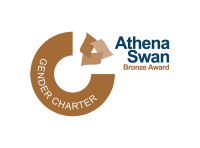
People have always needed to interact with their environment, collecting foodstuffs, hunting animals, working the land, and exploiting resources. All human societies need energy and resources in order to sustain themselves. As a result, people also have a profound impact on their environment when exploiting these resources. All of the goals and practices of a society to track and collect resources can be subsumed under the moniker of resource exploitation strategies. In order for societies to be resilient over longer periods of time, these strategies need to be sustainable. That is, a balanced interaction between society and nature is needed in which the social consumption of resources does not exceed their availability and/or regeneration rate.
In this talk, I will present an agent-based model to explore human impact on the environment by simulating subsistence and resource exploitation strategies in southwest Anatolia from Iron Age to Hellenistic times (1000-100 BCE). With our model we aim to test the hypothesis that hilltop sites in the inland of southwest Anatolia can be considered major drivers of environmental change during the Iron Age to Hellenistic period. Preliminary results indicate that our simulations are consistent with empirical observations of anthropogenic zones of human impact embedded in a natural forest matrix. While general patterns of sustainability can be observed for most communities under most model settings, a broader parameter swoop suggests that in times of high stress or resource demand, trade-offs emerge between the various resource exploitation strategies. This results in the disruption of resource stocks in certain communities, suggesting several scenarios of scarcity, struggle and even site abandonment. Our model therefore provides a suitable baseline for the assessment of socio-ecological sustainability in subsistence and resource exploitation of local communities. We will use this case study to offer a broader reflection on the usage of computational modelling as a tool in archaeology to reconstruct dynamic human-environment interactions
Learn more about Dr. Dries Daems here.

